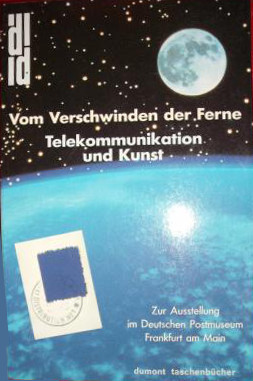Thomas C. Jepsen: My Sisters Telegraphic: Women in Telegraph Office 1846-1950 (2000)
Filed under book | Tags: · history of technology, labour, morse code, technology, telegraphy, women

The role of the telegraph operator in the mid-nineteenth century was like that of today’s software programmer/analyst, according to independent scholar Tom Jepsen, who notes that in the “cyberspace” of long ago, male operators were often surprised to learn that the “first-class man” on the other end of the wire was a woman.
Like the computer, the telegraph caused a technological revolution. The telegraph soon worked synergistically with the era’s other mass-scale technology, the railroad, to share facilities as well as provide communications to help trains run on time.
The strategic nature of the telegraph in the Civil War opened opportunities for women, but tension arose as men began to return from military service. However, women telegraphers did not affect male employment or wage levels. Women kept their jobs after the war with support from industry—Western Union in particular—and because they defended and justified their role.
“Although women were predominantly employed in lower-paying positions and in rural offices, women who persisted and made a career of the profession could work up to managerial or senior technical positions that, except for wage discrimination, were identical to those of their male counterparts,” writes Jepsen. “Telegraphy as an occupation became gendered, in the sense that we understand today, only after the introduction of the teletype and the creation of a separate role for women teletype operators.”
My Sisters Telegraphic is a fresh introduction to this pivotal communications technology and its unsung women workers, long neglected by labor and social historians.
Publisher Ohio University Press, 2000
ISBN 0821413449, 9780821413449
231 pages
Edith Decker, Peter Weibel (eds.): Vom Verschwinden der Ferne: Telekommunikation und Kunst (1990) [German]
Filed under book | Tags: · art, art history, electricity, photography, suprematism, telegraphy, telematics, television

Published on the occasion of an exhibition held at Deutsches Postmuseum, Frankfurt am Main, from 2 October 1990 until 13 January 1991.
Publisher DuMont Buchverlag, Cologne, 1990
Volume 257 of DuMont Taschenbücher
ISBN 3770127250, 9783770127252
359 pages
Jimena Canales: A Tenth of a Second: A History (2010)
Filed under book | Tags: · astronomy, chronophotography, cinema, history of science, history of technology, modernity, photography, science, technology, telegraphy, time

“In the late fifteenth century, clocks acquired minute hands. A century later, second hands appeared. But it wasn’t until the 1850s that instruments could recognize a tenth of a second, and, once they did, the impact on modern science and society was profound. Revealing the history behind this infinitesimal interval, A Tenth of a Second sheds new light on modernity and illuminates the work of important thinkers of the last two centuries.
Tracing debates about the nature of time, causality, and free will, as well as the introduction of modern technologies—telegraphy, photography, cinematography—Jimena Canales locates the reverberations of this “perceptual moment” throughout culture. Once scientists associated the tenth of a second with the speed of thought, they developed reaction time experiments with lasting implications for experimental psychology, physiology, and optics. Astronomers and physicists struggled to control the profound consequences of results that were a tenth of a second off. And references to the interval were part of a general inquiry into time, consciousness, and sensory experience that involved rethinking the contributions of Descartes and Kant.
Considering its impact on much longer time periods and featuring appearances by Henri Bergson, Walter Benjamin, and Albert Einstein, among others, A Tenth of a Second is ultimately an important contribution to history and a novel perspective on modernity.”
Publisher University of Chicago Press, 2010
ISBN 0226093182, 9780226093185
288 pages
review (Val Dusek, Notre Dame Philosophical Reviews)
Comments (2)
